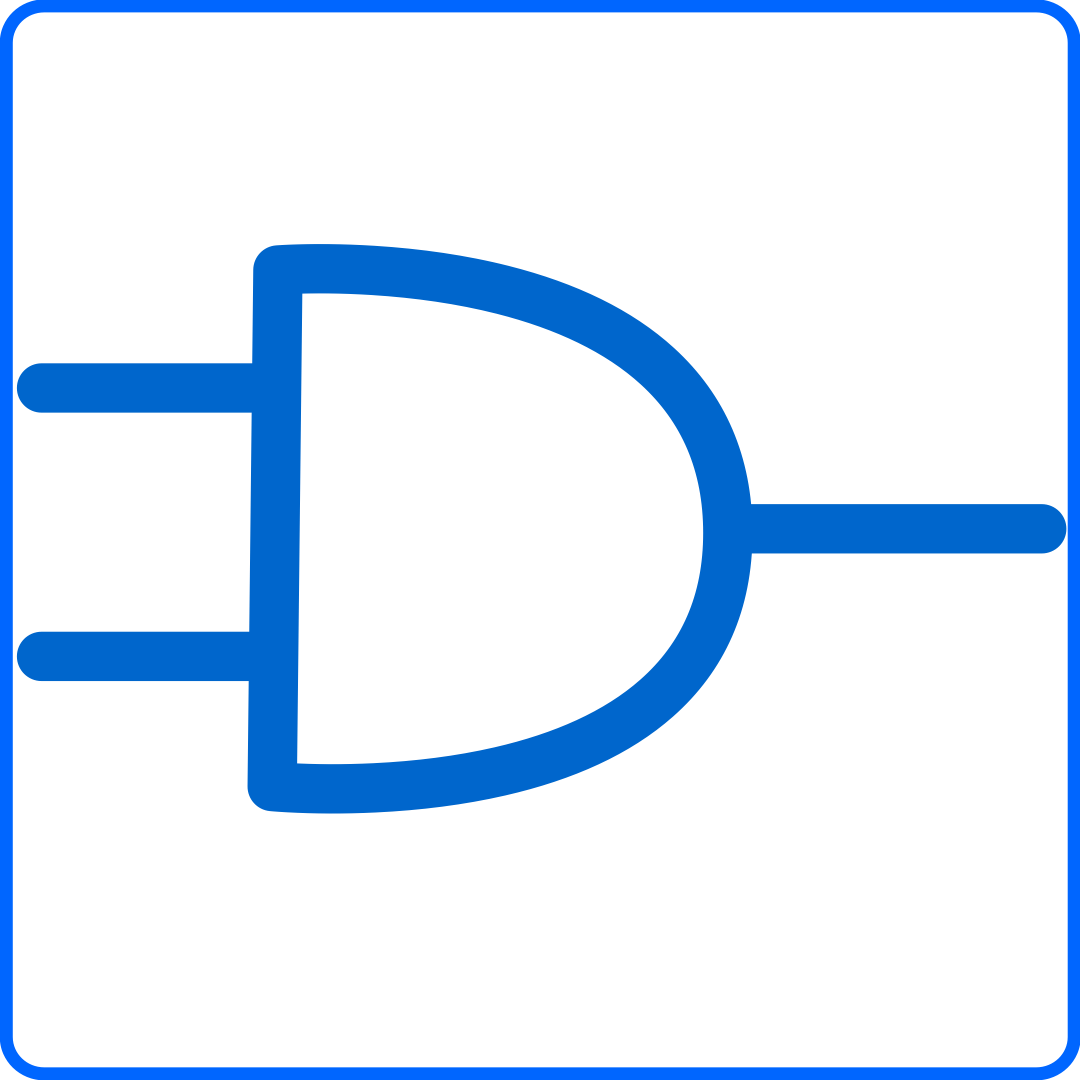
Abstract
Boolean, Sequential Logic and counters
Description
Pure Boolean Logic blocks
The boolean logic palette of tools in sciCompiler provides a collection of components that allow you to perform various boolean operations and manipulations within your projects. These components encompass typical boolean operators as well as additional tools such as bit slice and multiplexer. Let’s explore some of these components:
-
Boolean Operators: The boolean logic palette includes components for fundamental boolean operations such as AND, OR, NOT, and XOR. These components allow you to combine and manipulate boolean values based on logical conditions.
-
Bit Slice and Bit Concatenation: The bit slice component is a versatile tool that enables you to extract or isolate specific bits from a binary number. It allows you to specify the range of bits you want to retrieve and provides the extracted bits as output. This component is useful for tasks that involve bitwise operations and manipulation of binary data.
-
Multiplexer and De-multiplexer: The multiplexer, often referred to as MUX, is a component that facilitates the selection and routing of multiple input signals to a single output based on a select signal. It acts as a data selector, allowing you to choose and forward a specific input to the output based on the select signal’s value. The multiplexer component is particularly valuable for routing and controlling data flow in complex systems.
By utilizing these components from the boolean logic palette in sciCompiler, you can design and implement logical operations. They are really important for the design trigger logics like coincidence, anti-coincidence, and veto.
Combinational Logic blocks
Combinational logic refers to a type of digital logic circuit where the output is solely determined by the current input values. In other words, the output of a combinational logic circuit depends only on the combination of inputs at a given moment and does not involve any memory or feedback.
-
Flip-Flop: A flip-flop is a fundamental component used in digital circuits for storing binary data. It can be in one of two stable states (0 or 1) and changes its state based on control signals. Flip-flops are widely used for sequential logic and memory applications, where they retain their state until triggered by a clock or specific inputs.
-
Latch: Similar to a flip-flop, a latch is a circuit element used for storing binary data. It maintains its output state continuously as long as the enable signal is active. Latches are often used for temporary data storage or in situations where a simpler storage element than a flip-flop is required.
-
Edge Detector: An edge detector is a component that detects transitions or changes in a signal’s level. It identifies the rising edge (transition from low to high) or falling edge (transition from high to low) of a digital signal. Edge detectors are commonly used in applications such as signal synchronization, pulse detection, and timing control.
-
Counters: Counters are sequential logic circuits that increment or decrement a binary value in response to clock pulses. They are used to keep track of events, generate timing sequences, and perform arithmetic operations. Counters can be designed to count up, count down, or operate in more complex configurations such as ripple counters or synchronous counters.
-
Scalers: Scalers, also known as frequency dividers, are components used to reduce the frequency of an input signal by a specific division factor. They take an input clock signal and output a lower-frequency signal. Scalers are commonly used in applications where synchronization or frequency division is required, such as clock signal generation or time measurement.